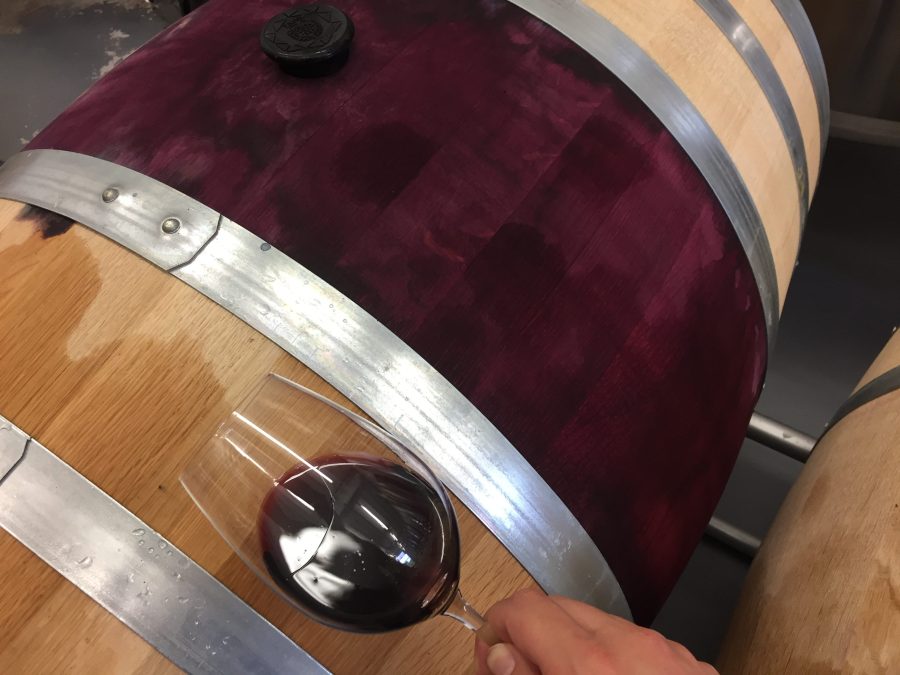Wine contact with lees and oak is a very old practice, so deep in our culture that it is considered a natural intervention. Wisely used in various techniques they can give some of the biggest positive impact on wine quality and style. It’s an area with complex dynamics and experimentation takes time: however, many advances have been made at a slow and steady pace.
The common scenario in the UK is that we have many vintages where we’re forced to pick earlier because of disease pressure instead of being able to wait for the desired level of ripeness or cold years with sharp acidity. In these situations, oak and lees, (grape and yeast lees), can make the difference changing the attitude of a wine. In “good vintages”, they make an even a better job of course; however, let’s not forget that everything depends, and something that works for one particular wine or style, might not work for another.
Let’s summarise three key points:
- Wine style
- Balance and complexity
- Management.
Wine style
Almost every wine can benefit from oak and lees contact: depending on the technique, they can easily pass unnoticed even to an expert palate. They both extend the shelf life and provide some very elegant and enjoyable aspects such as: influencing the volatility of aromatic compounds, add/generate new ones, improve the resilience to oxidation or stability.
Sometimes, it’s just a case of lowering the acidic feel and keeping a low pH (e.g. rosé wines), smoothing the texture and providing natural sweetness while keeping a wine dry with less SO2 (this applies to any wine).
I’m sure you noticed that I’ve just scratched the surface of some of the most interesting effects without even talking about which lees to use, when, how much, for how long, from which wine and how to manage them. Same considerations apply to oak flavours, fermentation, micro-oxygenation, the kind of oak, toast, grain, terroir, storage condition, bâtonnage, chips, staves, barrels, inserts, tannins, polysaccharides, age, time etc. It’s a fascinating subject that needs its own space to be discovered and digested with a never ending learning curve.
Balance and complexity
Filling a barrel with wine or adding oak and lees is easy, although, achieving a balanced and elegant complexity can be a different story and that’s what in my opinion makes great wines. It’s an area of fine winemaking that takes dedication and experience.
Each different wine needs to be seen in its own context and its purpose. Some applications related to the use of oak and lees can have a relatively quick effect; perfect for early release wines, while some other actions, can take years and need to be seen in perspective as they change with the evolution of a specific wine.
We achieve balance when the nose descriptors and the tactile sensations of alcohol, acids, tannins, minerality and mouthfeel are in harmony without overpowering each other. We find complexity and elegance, when the combination of all the above interact and enhance each other; creating a pleasant third dimension difficult to describe in a tasting.
This creates pure joy with an intricate and fascinating tasting experience.
Management
You might recall my past article in the March edition about the creation of blending components, well, that is what I mean with management. It relates very much to trials, time, experience, knowledge of the terroir, constant observation, adjustments and ultimately, personal taste.
These practices are relatively well known for red wine and oaked styles of still white wines. They work very well with almost all sparkling wines even without providing any oak character (if wanted), to increase complexity or just to enhance the autolysis character. They definitely help with the reduction or elimination of sugar in the liqueur de expedition. They can also provide very subtle and often unnoticeable layers of complexity in rosé and aromatic white wines.
Because of the extended shelf life, resistance to oxidation, polysaccharides and manno-proteins interactions, protein and chill stability, in some cases, they also represent a very good choice for organic, low intervention and biodynamic wines as they tend to be higher in acidity and the grapes are richer in oxidising enzymes due to the vulnerability to diseases at least with classic varieties.




